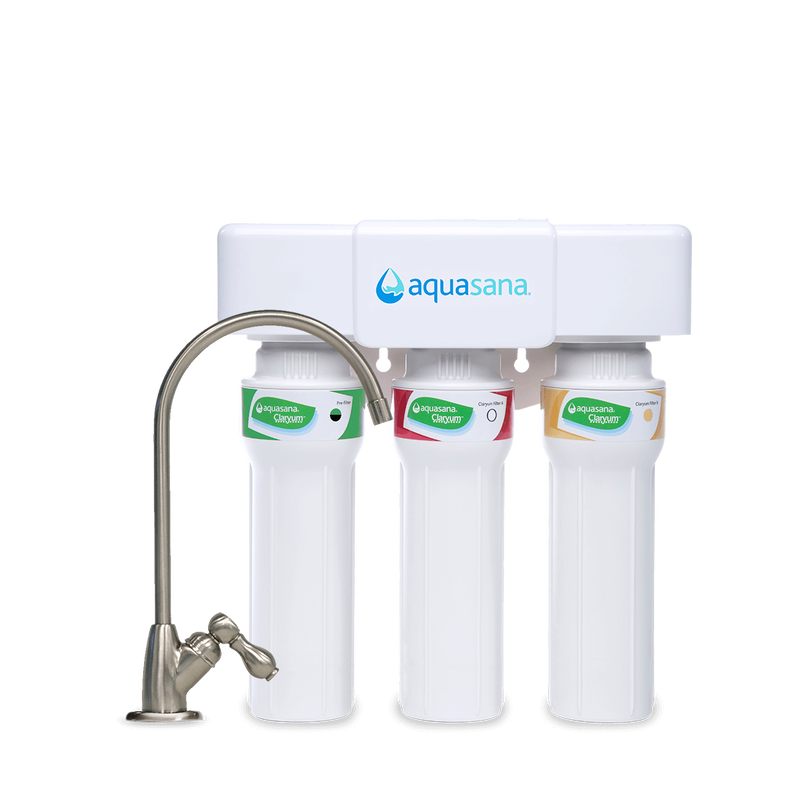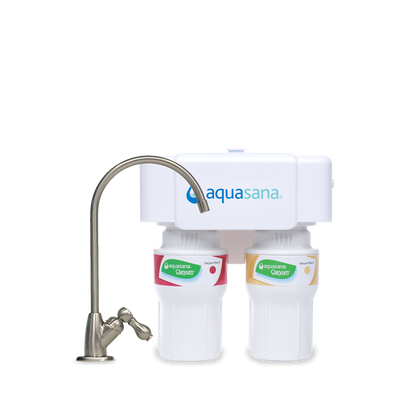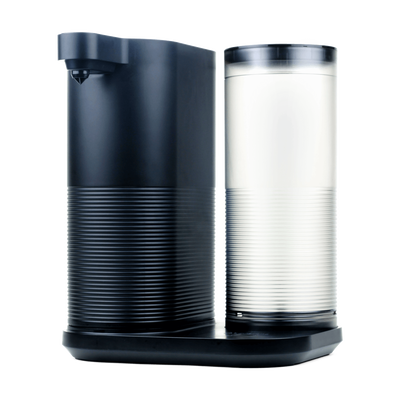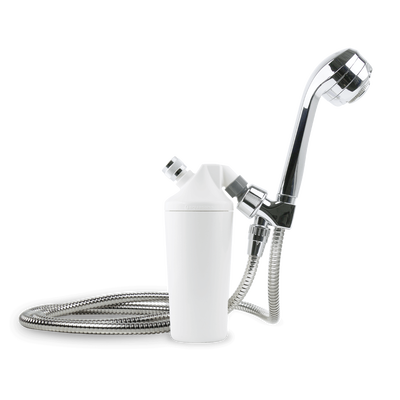What is a performance data sheet for a water filter?
A performance data sheet is a report provided by the water filter’s manufacturer that discloses information about its effectiveness in removing contaminants during lab tests. The performance data sheet should indicate which systems were tested, who conducted the testing, the conditions of those tests, and the reduction percentage of contaminants. If the system is being tested to NSF/ANSI Standards for certification, it should also indicate whether the system passed or failed. It should be noted that sometimes a system will not have a performance data sheet, but it’s worth looking at if a PDS is available for any system you’re considering.
Why are performance data sheets important when choosing a water filter
If you intend to address contaminants so that your drinking water is safer, you need to ensure any system you’re considering is actually effective. You may see marketing language on the packaging or website about a few contaminants, but a performance data sheet gives you the full picture for a more informed decision.
For example, say you decide to buy a water filter because you saw a report on the news that your area has a high level of chlorine in the water. You may see a filter that says it reduces the presence of chlorine on the company’s website. Seems like a good solution, but without the details and testing data to back it up, you could be choosing a bad filter.
Although the filter may claim to reduce chlorine, you don’t know by how much. It could reduce 90% of chlorine, or only 5%. Even if the brand does specify the percentage and it seems high, you don’t know anything about the test. If it was done by the manufacturer directly, it may be less trustworthy than a test done by an independent third-party testing group like the Water Quality Association (WQA) or The International Association of Plumbing & Mechanical Officials (IAPMO).
Performance data sheets are also helpful for seeing how a filter addresses multiple contaminants, including those that aren’t listed on the label or website’s product description. If you’re choosing a water filter based on the contaminants listed in your local water quality report, you can cross-reference that report with a performance data sheet to ensure you’re protecting against all the contaminants of concern in your area.
How to read a water filter’s performance data sheet
Without context, a water filter’s performance data sheet can be confusing to interpret. To help you understand them, we’ll walk through the performance data sheet for the Aquasana Claryum® 3-Stage Max Flow.
The most important thing to look for is a seal or badge from the testing agency like this:

If you don’t see a badge from a notable third-party testing group, or if it lacks certifications to NSF/ANSI Standards (the leader in water filtration certification) — this may be a red flag that you should consider a different system. This badge is from the Water Quality Association, and the “C” and “US” indicate it applies to products sold in Canada and the US. Next to the seal, there’s also context about the testing and certifications that indicates who it was done by (WQA) and what NSF/ANSI Standards the system is certified to (42, 53, and 401). If you don’t care to look through the numbers in the sheet, this snippet tells you some basic information that can help with your purchasing decision.
Below this section, you’ll also see some disclaimers about the contaminants and general notes about testing and usage for the filter:

For this system, the disclaimers basically explain that all contaminants addressed by the filter are listed in the performance data sheet. However, the filter may address contaminants that aren’t present in your water. On the other hand, there may be contaminants in your tap water that are not addressed by the filter. The final disclaimer provides some context about NSF/ANSI Standard 401, and then gives some general notes about the filter’s testing and usage.
Jumping to the top of the performance data sheet, you’ll see a table that lists the system(s) this testing applies to. Information is provided about the system including its model name, replacement units, and parameters for the rated capacity (how much water can it filter before needing a replacement), operating temperature range, and the rated flow (how fast it dispenses filtered water).

After a brief explanation of the system’s parameters, you’ll see details about each of the standards the system is certified to:

Tables are individually labeled for the specific NSF/ANSI Standard and are easy to follow. On the left, you’ll see requirements that need to be met in order to obtain certification. For example, “Chlorine Reduction” followed by a column that indicates the “Minimum Reduction” the system must provide in order to meet that Standard. In this case, the system must reduce 50% or more chlorine in order to pass this requirement. In the following column, you can see the system’s “Overall % Reduction”, which indicates the percentage of that contaminant actually reduced by the system. In this case, the Claryum® 3-Stage Max Flow reduces 97.66% of chlorine. That’s nearly double the minimum requirement, so it clearly passes which is indicated in the “Results” column on the right. Any additional contaminants the system reduces for NSF/ANSI Standard 42 are listed below chlorine. It should be noted that brands are only required to list contaminants the system is tested and certified for, so if a contaminant isn’t listed — it may mean that the contaminant wasn’t tested or the system didn’t pass the certification for it. Testing details for other NSF/ANSI Standards follow the same format and are also listed.
The final portion of this performance data sheet shows testing details for performance claims regarding other contaminants using surrogate testing. For context, surrogate testing involves the use of a substitute compound. In this case, chloroform is being used as a surrogate for each of the contaminants listed. Rather than testing each contaminant one at a time, using chloroform allows the system to test for them all at once because chloroform contains all 50 of the contaminants in the table.

With that explanation, we can now jump into what each of the columns means. To make this easier to follow, we’ll put the information in a skimmable bullet list below:
- VOCs (by surrogate testing using chloroform): Lists the Volatile Organic Compound (VOC) that was tested using surrogate testing through chloroform.
- Drinking water regulatory level (MCL/MAC) mg/L: Lists the Maximum Contaminant Level (MCL), or the Maximum Acceptable Contaminant (MAC). The MCL is a US regulation that sets the maximum level of a contaminant allowed in public water, while the MAC refers to regulations in Canada. Sometimes a substance may not have an MCL in the US, but has MAC in Canada. This level is listed as mg/L, meaning the milligrams of contaminant allowed per liter of water. For example, in “alachor”, the drinking water regulatory level is 0.002 mg/L, meaning the US government says it is unsafe to use water with more than 0.002 mg/L of alachor. If no figure is given (like “chloropicrin” in the last row), it means the contaminant is not regulated.
- Influent/Unfiltered mg/L: Indicates the contaminant level in unfiltered water flowing into the system. For example, in “alachor” the contamination concentration is 0.050 mg/L before being filtered.
- Effluent/Filtered mg/L: Indicates the contaminant level in filtered water flowing out of the system. For example, in “alachor” the contamination concentration after filtration is 0.001 mg/L.
- Percent Reduction: Indicates the percentage of the contaminant reduced by the filter. For example, we know the influent/unfiltered level of alachor was 0.050 mg/L and the effluent/filtered level was 0.001 mg/L. That indicates a 98% reduction in the contaminant’s presence, which is noted here.
You can use this list to understand how effective any water filter is in reducing contaminants it claims to. If you’re cross-referencing the list with your water quality report, ensure it covers any contaminants you’re concerned about in your water.
Where to find a water filter’s performance data sheet
You can find a water filter’s performance data sheet on the brand’s website, or in the back of the system’s owner’s manuals. For example, Aquasana lists the performance data sheet in the product documentation on each product’s webpage:

We also include a QR code in the owner’s manual that can be scanned to access the performance data sheet:

Alternatively, third-party testing certifying bodies (NSF, WQA, IAPMO), allow you to search for products and see certifications on their websites.

This can be helpful if you’re unable to find the performance data sheet through the brand’s resources. It’s also a good way to see if a brand is lying about its test.
With this information in hand, you should be equipped to choose a water filter that’s tested and certified to address contaminants of concern. If you’re just starting the process and not sure what brands to look at, check out our wide selection of whole house, under sink, countertop, and shower filters with certifications and performance data sheets to back up performance claims.
At Aquasana, we have an entire page dedicated to all of our system's performance data sheets, so you can compare contaminant reduction, find your system's performance data sheet, and more. We regularly update our performance data sheets internally and with our third-party testing parties.
UNDER SINK WATER FILTER
Claryum® 3-Stage Max Flow
Remove up to 99% of 78 contaminants, plus sediment. Now with 44% faster water flow for ultimate hydration.



